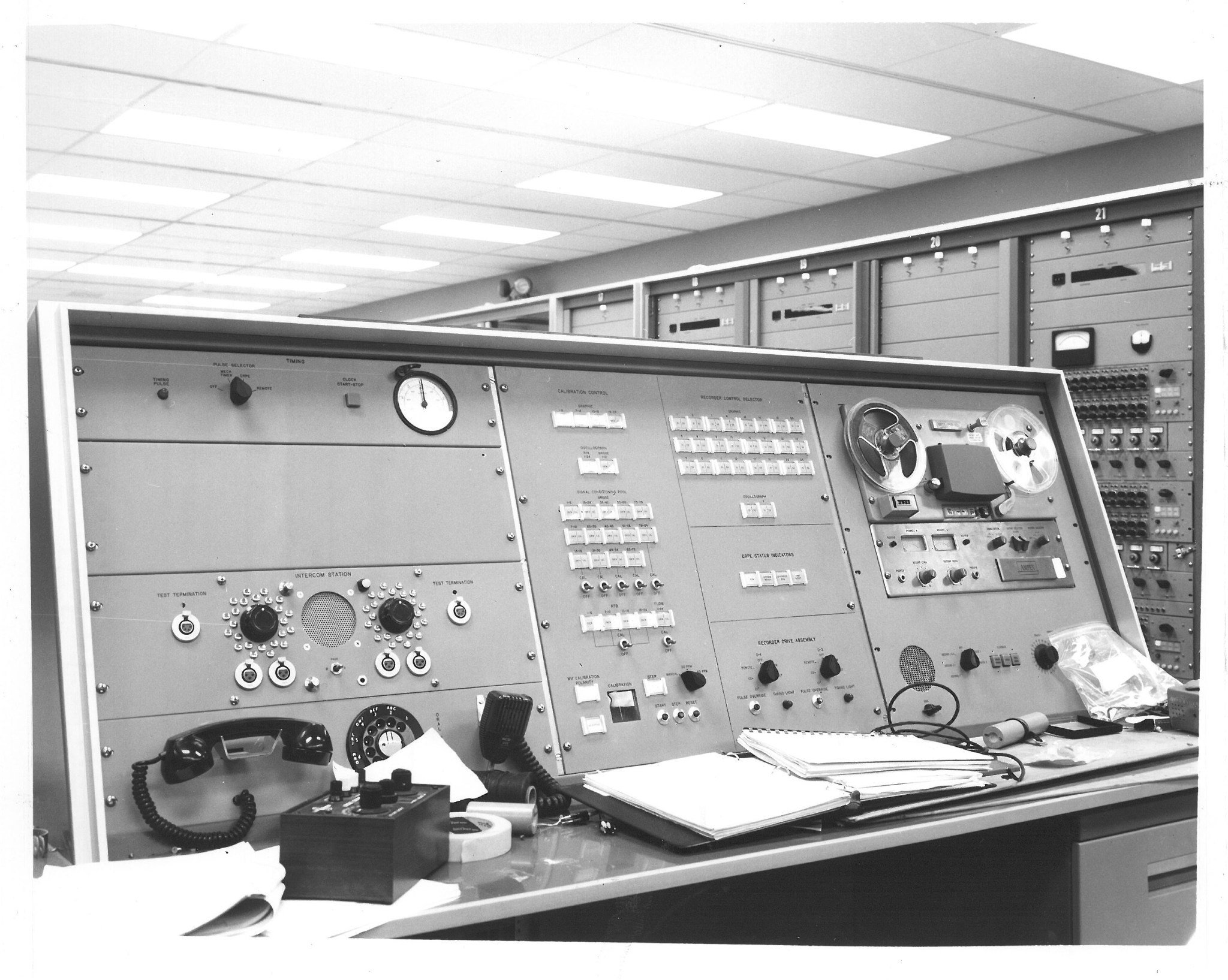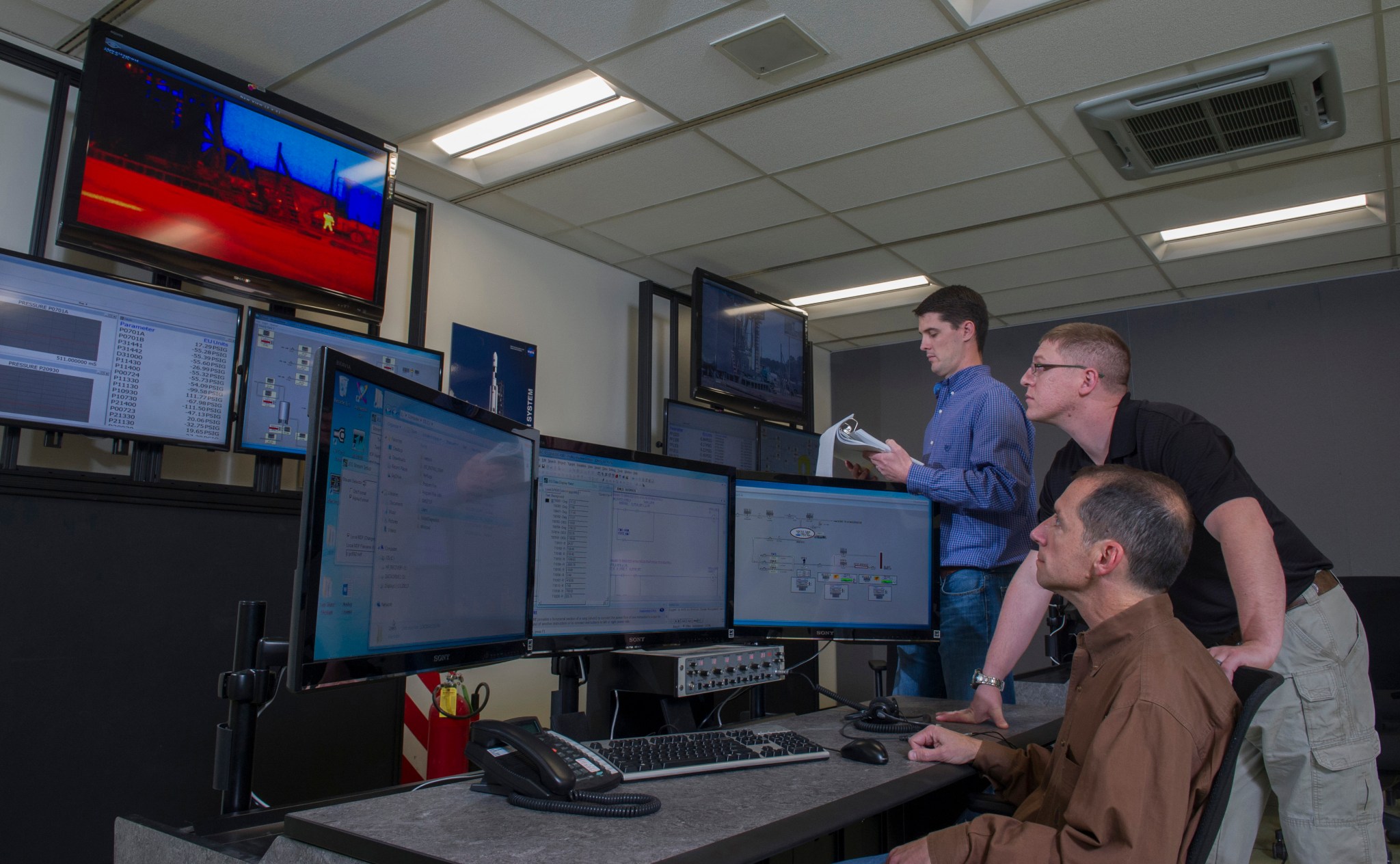Smoke and fire might be the first things people envision when they think about rocket testing, but information technology systems are just as important to the success of a test. To create a facility worthy of important NASA testing, a landmark building in the East Test Area at NASA’s Marshall Space Flight Center in Huntsville, Alabama, has been transformed into a bustling information and control hub for test operations.
“By modernizing and consolidating our test control and data acquisition systems, we have both improved the infrastructure while making it more affordable for our customers to conduct tests,” said Chris Singer, the director of Marshall’s Engineering Directorate. “These systems also require less maintenance, reducing our long-term facility costs and allowing better use of our resources.”
Engineers just began using brand new control and data acquisition systems for a series of tests on one of the largest composite rocket fuel tanks ever built. The new control and data acquisition hardware located in Building 4583 also is being used for Space Launch System (SLS). This historic building—now known as Marshall’s Test and Data Recording Facility–has played a role in testing for many American rockets and other space systems.
“We are excited about having a modern control center with the latest technologies to replace the older, obsolete ones,” said Ralph Carruth, director of Marshall’s test laboratory. “By consolidating to one location, we’ll be able to operate much more efficiently and reduce costs.”
Centralized operations lower the amount amount of energy that goes into powering network infrastructure at multiple locations and the associated systems for securing, cooling and maintaining them. New state-of-the-art data acquisition systems increase the amount and quality of test data collected. Safely testing and obtaining reliable data has been the key to the successful development of American rockets from the Redstone, Jupiter, Juno and Saturn rockets to the space shuttle main engine and boosters to the current testing for SLS and other critical space technology.
With its high-speed video and supplement control systems, the smaller, more flexible control center is equipped to support a variety of NASA projects as well as those from other government agencies and commercial space efforts – large and small.
Media Contacts:
Tracy McMahan
Molly Porter
Marshall Space Flight Center, Huntsville
tracy.mcmahan@nasa.gov
molly.a.porter@nasa.gov
256-544-0034






























